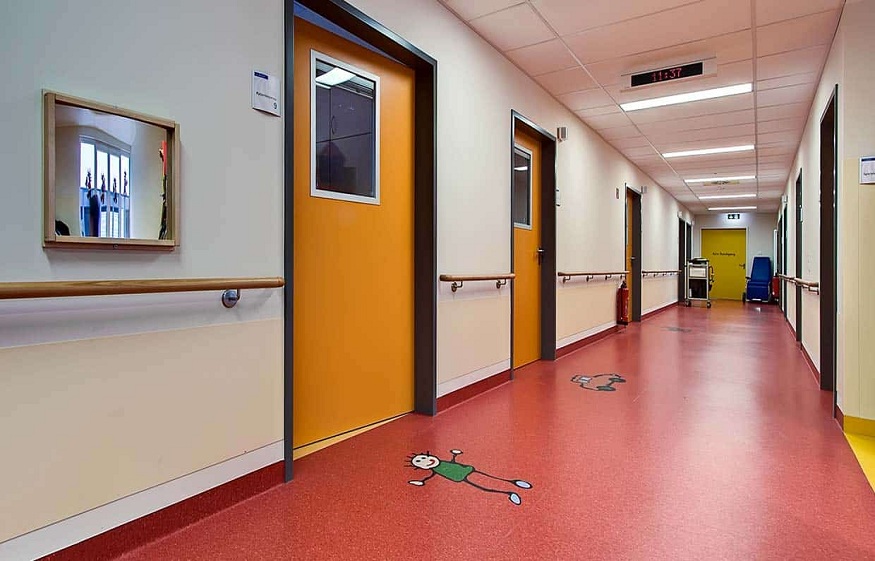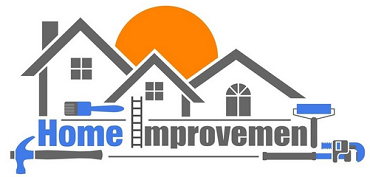What Are The Advantages Of Using Vinyl Floors In Hospitals?

When an architectural element is installed in a health sector establishment, it must meet strict parameters to guarantee the health of the place. In addition, both the ceilings, as well as the floors and the painting of the walls, must adhere to the regulations given by the local authorities to work legally.
Asepsis is one of the many aspects to which attention must be paid when adapting this type of facility. It does not matter if it is a health centre, a clinic, a hospital or a doctor’s office; cleanliness is essential since it prevents those who are there, working or as patients, from catching some disease.
This is one of the reasons why vinyl floors are one of the preferred options since, in addition to offering a wide variety of designs and colours, they have a high level of asepsis, are easy to install, and are resistant to moisture. And they are easy to maintain. They are also conductors and have a homogeneous texture to avoid accidents in surgical or RX areas, for example.
To delve a little deeper into the advantages that vinyl flooring offers when installed in the hospital sector, here are nine benefits that this type of flooring has to offer:
1. Strength and durability
The materials from which vinyl flooring is made give it physical properties that make it resistant to almost anything, from falling objects to scratches (at least most) and moisture. These properties help make their maintenance easy, fast and economical, but also make them an excellent option as they can withstand the weight of medical equipment, the fall of utensils and the fall of water or other liquids present in surgical rooms, laboratories or clinics.
2. Cleaning
The high traffic, usual in customer service and reception areas, has a higher probability of accumulating bacteria thanks to the coming and going of people. This fact implies that these areas require constant cleaning, 2 to 3 times a day, to prevent the proliferation of viruses and bacteria. In addition, as a result of the regular traffic, the floor can suffer scratches caused by chemical residues from the concrete that adheres to the sole of the shoes, and the idea is that it be a floor that maintains a good appearance for a long time.
When installing vinyl floors, the cleaning process is straightforward and fast. It will only be necessary to pass a damp cloth (or mop) once a day but sweep at least twice to remove dust residues responsible for damaging the upper surface of the floors. Tiles.
On the other hand, when installing vinyl floors, it is not necessary to clean the joint gaps of the tiles, or if you prefer to establish a base made of roll-type vinyl, the cleaning and disinfection process will be even more straightforward.
3. Asepsis
As we mentioned initially, the presence of mites, fungi and bacteria can increase the probability of suffering from respiratory diseases; In other words, for those who already suffer from bronchitis, pneumonia or asthma, it can be even more detrimental to their health. Something that should be avoided at all costs.
Although there is a low transmission of diseases and infections through surfaces, these may appear due to having contact – with feet and hands-on on dirty surfaces. Something sought to be avoided when using aseptic floors, which do not increase the production of mites or fungi.
In addition, most industrialised floors and the chemical products that are usually used to disinfect them have, among their components, carbon-based chemicals that evaporate and, after constant exposure, become harmful to health, affecting the respiratory tract.
You may be interested in Vinyl floors in the health area
For its part, vinyl floors do not contain phthalates, heavy metals, formaldehyde or other components harmful to health. That is why they are widely used in intensive care units where it is essential to have sterilised surfaces and with a low presence of biological risks.
However, it is always essential to carry out correct disinfection on each surface, in certain areas more than in others, to reduce the chances of contagion.
4. Thermoacoustic insulation
Most centres that are part of the health sector tend to be very cold because they have a broad and open architecture; The floors also influence this aspect, and it is another of the characteristics that makes vinyl floors stand out since they offer thermal insulation that provides warmth to the spaces, making it feasible to walk barefoot and not collide with a cold floor. Of course, you don’t usually walk barefoot in hospitals, but many patients, especially those who are hospitalised or have a surgical procedure, tend to be scantily clad.
On the other hand, acoustic insulation helps ensure that the constant coming and going of nurses and doctors, in addition to the movement of beds and equipment, is not uncomfortable for patients, whether in corridors and adjacent rooms or on upper floors. The level of comfort provided by vinyl floors, in this sense, is enormous, which is why it remains among the preferred ones for this use.
5. Liquid resistance
One of the parameters that health centres must adhere to is the installation of floors capable of repelling liquids since damp floors accumulate germs and bacteria that, as we have said before, affect the health of all those who pass through the place. In this case, vinyl floors meet this parameter very well since they are waterproof and easy to clean in the presence of liquids.
6. Non-slip
In hospitals, running is the daily bread, so it is essential to avoid possible accidents by installing floors that offer a high level of grip, even when wet. Slipping is not an option when you’re racing to attend to a medical emergency.
In addition, patients who have mobility problems should feel safe when moving from one place to another or doing physical therapy. It should even comfort those who walk using crutches or canes and when driving with wheelchairs and stretchers since the latter require safe transportation without getting stuck due to uneven floors.
In areas where there is a high probability of liquid spillage (bathrooms, laboratories, operating rooms, sterilisation cabins and even dining rooms), it is necessary to use particular floors that reduce the risk of accidents.
7. Electrical conductivity
Another property of vinyl sheet flooring is that it is conductive that prevents possible electrical shocks caused by the wiring needed to supply medical, laboratory and operating room equipment.
Conductive floors are a great ally in medical centres since electrostatic charges are strategically routed away from people and other sensitive medical equipment to minimise electrical arcs that could cause explosions due to equipment malfunction.
8. Demarcation of areas
The wide range of designs offered by vinyl floors allows areas to be restricted with specific colours, styles, and shapes that, in addition to adjusting to a place’s style, help to demarcate distinct regions according to their use. This process is straightforward as it can be done with decorative strips or by combining different tiles.
9. Aesthetics
In addition to covering the primary needs that a health centre requires, vinyl floors offer a pleasing aesthetic level that easily adjusts to any style and design. For this reason, it is beneficial for small health or consultation centres, even for large clinics and hospitals.
As you can see, vinyl floors, especially roll vinyl floors, are an excellent option to install in health centres since they are designed to meet all the needs demanded by a place where health and patient protection come first.






